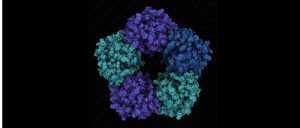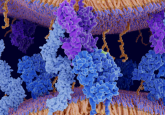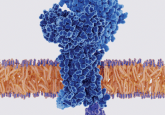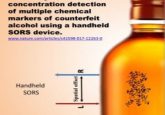Studying protein–ligand binding with Raman spectroscopy

A novel Raman technique measures protein–ligand binding at physiologically relevant conditions in real time.
Researchers at the Texas Agricultural and Mechanical University (TX, USA) have developed a new technique to screen protein–ligand interactions from small samples under physiologically relevant conditions. This method can be used to study live proteins and shows promise for use in high-throughput drug screening.
The heat generated by the laser used to excite samples in Raman spectroscopy often damages or denatures live proteins during measurements, resulting in non-reproducible results, especially for samples with low concentrations of proteins. Whilst different techniques have been developed over the years to address these limitations, these often have drawbacks such as low resolution and slower data collection speeds.
The researchers of this study developed a technique called thermostable Raman interaction profiling (TRIP), which provides label-free, highly reproducible Raman spectroscopy measurements and enables monitoring of protein–ligand interactions in real time at the atomic level.
“Protein is a very fragile biological molecule and needs specific care,” commented lead author Narangerel Altangerel. “When I cool down the surface or substrate, I can make the proteins happy. I can poke them with the laser, and they can now output the information I need.”
 Synthetic riboswitches detect biomarker proteins
Synthetic riboswitches detect biomarker proteins
In a recent study, researchers developed a low-cost RNA-based sensor that detects biomarker proteins.
To cool down the proteins, the researchers used a glass slide coated in a thin layer of gold. This golden layer serves two functions: dissipating the thermal energy from the excitation laser – preventing the denaturation of proteins – and blocking the fluorescent background signals produced from the glass slide. Raman microscopy is then performed on the cooled sample, detecting small changes in molecular geometry, which is sensitive to intermolecular interactions including the formation of biologically important protein complexes.
The analysis is performed on a sample with and without ligands, revealing binding-induced vibrational changes in the spectra. The peaks are then correlated to specific binding interactions that are present between proteins and ligands.
“The whole idea from the spectroscopy statute is that it requires minimum to no sample preparation, so this can be moved into the clinic right away,” added Vladislav Yakovlev, co-author of the study. “Clinicians and patients don’t have to wait for days and weeks of analysis. You can get all these answers almost right away.” Additionally, this technique can be performed on a small sample size with a low protein concentration and uses a low-cost extension to an existing system.
The small sample size and minimal sample preparation makes TRIP a cost-effective potential method for testing drugs and vaccines. Next, the researchers hope to use this technique to identify the chemical composition of proteins.





